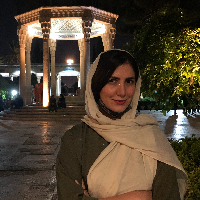The Impact of the States and Official Journalistic Norms on Women's Presence in Newspapers
Author(s):
Article Type:
Research/Original Article (دارای رتبه معتبر)
Abstract:
Introduction and statement of the problem: there are some written rules in the profession of journalism under the title of press law that aim at monitoring the activity of newspapers. In addition, it is assumed that the unwritten rules affect the content produced. These rule also affect how women journalists are represented. This representation usually takes placed in according to the political orientation of the newspaper and the social norms in the journalistic sphere. Under the formal press law, there is no limitation on the gender of the editor or the journalists, nor is there any reference to the issues of whether women can participate in production of the newspapers contents unless it is against ethical codes of public decency. However, unwritten rules in the form of social norms can prevent women from progressing. These rules can even reproduce a stereotyped image of women.
Theoretical
Prominent
Theoretical
Background
According to the views of women in the field of media, the journalism pieces produced by men in the media are more important, and women are generally represented in the form of gender stereotyped images, such as motherhood and sexuality. The media according to their economic and ideological tendencies, can present a news story in various formats. They can reproduce gender stereotypes, or correct them, or critique them. Media scholars such as Lizbeth van Zonen and Margaret Gallagher argue that the increased presence of men in the production of media content makes the content look like a masculine one, and therefore there is a need for women to be content producers and decision makers. There are two kinds of barriers in the media atmosphere that prevent women to reach such goal: the first one is the glass roof according to which women cannot upgrade to higher positions. The second one is the wall of glass which makes the female and male journalists who are working on the same job but have different responsibilities. This means soft news such as women's fashion and art news are handed over to women, while hard news stories such as political and economic news are handled by men.Methodology
In this research we used two methodologies, i.e. content analysis of the newspapers and interview with journalists. Using such methods, we tried to examine the effect of the state changes and official journalistic norms on womens participation journalism. In content analysis, the content of the newspaper is characterized by quantitative and qualitative content analysis. In the interview method, the findings from interviews with journalists are categorized and converted into endpoints after coding, open source and selective coding.Results And Discussion
According to the analysis of the content of newspapers, conservative governments are more likely to reproduce gender stereotypes than reformist governments, something that contributes to how women in newspapers are being represented. Also, the elected governments can also contribute to an increase or decrease in the number of women writers. The number of women writers declined during the conservative government. In addition to the effects of the element of government, we also the political trend of the newspaper. In the conservative newspaper, women have been portrayed more as stereotyped and cliché images that they were portrayed in the reformist newspapers. Journalist's gender also affects the reproduction or non-reproduction of gender stereotypes. Accordingly, women are more likely to produce progressive content about their gender than men do. The work environment of the conservative newspapers generally provides conditions for the glass ceiling and the lack of promotion. Such condition is less apparent in the reformist newspapers. In general, conservative journalism is more respectful to women. This is while work environment reformist journalism is so that permits sexist jokes that sometimes is accompanied by sexual harassment. These issues are also discussed more openly than they are in conservative journalism workplace.Conclusion
Some of the findings indicate that the nature of the elected governments affects the content of the newspapers and therefore affect the presence of women writers and the representation of women in newspapers. Women journalists produce progressive materials about their gender priorities, while male journalists act differently. The male reformists are more affected by the governments, while conservative men produce gender stereotypes in various governments regardless of the nature of the elected government. The norms of society can also affect the work environment and, alternatively, the status of women and their promotion.Prominent
Results
gender is a latent variable and regardless of the political tendency of the elected government and the newspaper, it plays its own role. It has a major role in reproduction of gender stereotypes or in preventing its reproduction. women continue to disseminate progressive articles about their gender priorities regardless of the political orientation of the newspaper, and the restrictions or freedoms that various governments may apply.Keywords:
Language:
Persian
Published:
Global Media Journal - Persian Edition, Volume:12 Issue: 23, 2017
Page:
85
magiran.com/p1793086
دانلود و مطالعه متن این مقاله با یکی از روشهای زیر امکان پذیر است:
اشتراک شخصی
با عضویت و پرداخت آنلاین حق اشتراک یکساله به مبلغ 1,390,000ريال میتوانید 70 عنوان مطلب دانلود کنید!
اشتراک سازمانی
به کتابخانه دانشگاه یا محل کار خود پیشنهاد کنید تا اشتراک سازمانی این پایگاه را برای دسترسی نامحدود همه کاربران به متن مطالب تهیه نمایند!
توجه!
- حق عضویت دریافتی صرف حمایت از نشریات عضو و نگهداری، تکمیل و توسعه مگیران میشود.
- پرداخت حق اشتراک و دانلود مقالات اجازه بازنشر آن در سایر رسانههای چاپی و دیجیتال را به کاربر نمیدهد.
In order to view content subscription is required
Personal subscription
Subscribe magiran.com for 70 € euros via PayPal and download 70 articles during a year.
Organization subscription
Please contact us to subscribe your university or library for unlimited access!


